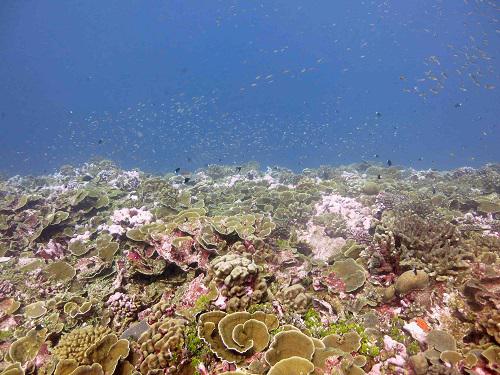Julia K. Baum
Other projects
21 Jun 2017
New Insights about Coral Reef Resilience from the Heart of the 2015 - 2016 El Niño
16 Jul 2019
Ecosystem Consequences and Recovery from a Globally Unprecedented Heat Stress Event
In 2015, I will lead the fifth year of a coupled socio-economic – ecological monitoring program on Kiritimati to examine connections between coral reef health and human welfare.

Kiritimati is part of the Republic of Kiribati, one of a handful of island-nations identified as having high reef dependence, high exposure to impending anthropogenic threats, and low capacity to adapt to these threats. As the world’s largest atoll, Kiritimati’s coral reefs span an unparalleled disturbance gradient from near-pristine reefs to highly degraded ones. I lead a coupled socioeconomic-ecosystem monitoring program on Kiritimati. To date, we have data from 2007, 2009, 2011, and 2013. Data from this Rufford grant will allow us to assess changes in human well-being and reef health over the past nine years, which has been a period of rapid change on Kiritimati. Over the past two years in particular, fishing pressure and tourism have increased substantially on Kiritimati, and this past January the atoll was hit by the largest storm since we began our work. Monitoring data like ours are critically important for understanding how ecosystems, and the communities who rely upon them, respond to large-scale disturbances. Examining data from across years, this summer’s field season offers an opportunity to:

i) test how Kiritimati’s reefs are recovering from a large-scale pulse disturbance – the major storm that devastated on side of the atoll in early 2015;
ii) monitor impacts of a second major pulse disturbance – a bleaching event that is predicted for this summer, iii) examine how accelerating press disturbances (subsistence and aquarium fisheries, tourism, pollution) on Kiritimati are impacting reef health and human welfare.
Unlike many monitoring programs, which began only after ecosystem degradation, our program includes near-pristine reefs, and hence will provide novel insights about the factors underlying coral reef resilience. My team and I will quantify changes in human welfare, subsistence and aquarium fishing, and coral reef health, and we will assess how fishing is impacting the reef, the efficacy of current aquarium fishery management measures, and the receptivity of the community to new measures to improve sustainability of the trade. We also will conduct conservation education activities and continue to build relationships with local resource users and managers aimed at enhancing understanding of the connections between reef health and human livelihoods, and fostering improved resource conservation measures.